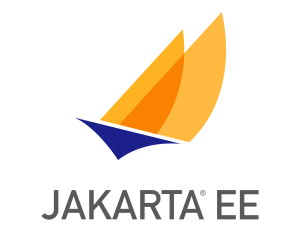Embracing Jakarta EE’s Evolution for a Robust Future
If you’ve been exploring the dynamic realm of server-side frameworks, you’ve likely caught wind of Jakarta EE’s evolution. Curious about why it has become the preferred choice in our era dominated by microservices-based architectures? Get ready for an enlightening journey into Jakarta EE’s evolution!
In this journey together, we’ll explore why Jakarta EE has risen to fame and become a stalwart in the realm of Java development. Brace yourself for a simple yet insightful dive into how this framework has seamlessly integrated with the industry-wide shift towards microservices, making it a hot favorite among developers.
Ready to embark on this adventure? Let’s unravel the reasons behind Jakarta EE’s soaring popularity in the exciting world of modern Java development!
1. Revolutionizing Java: The Journey from J2EE to Java EE
Java EE, formerly known as J2EE, has undergone a remarkable evolution, shaping the landscape of enterprise-level Java development. The transition from J2EE to Java EE represents a significant milestone in the Java ecosystem, marked by advancements that cater to the changing needs of developers and businesses.
The year 2000 witnessed the introduction of J2EE 1.2, laying the foundation for what we now know as “server-side” Java. This era was dominated by multi-tier applications, often described as monoliths, with various components deployed on application servers like WebSphere and JBoss. This architecture included graphical user interfaces, stateless EJBs, MDBs, and JPA components.
Fast forward to 2006, Sun Microsystems simplified the naming convention, rebranding J2EE as Java EE (Java Enterprise Edition) with the release of version 5. Java EE not only signifies a name change but also reflects a comprehensive modernization effort. With successive versions, Java EE introduced features like dependency injection, simplified packaging, and improved support for RESTful web services. These updates were pivotal in streamlining development processes and fostering a more adaptable ecosystem.
Simultaneously, Java SE became Java Standard Edition. Oracle entered the scene in 2010 by acquiring Sun Microsystems, inheriting products like Glassfish and WebLogic. While Java EE enjoyed widespread success, Oracle’s relationship with the Java community became a point of contention.
Oracle’s focus on RDBMS software led to changes, with Java SE becoming a commercial product requiring a subscription. Moreover, the community-driven shift towards microservices and cloud-native architectures prompted Java EE to reposition itself. Recognizing the growing prominence of lightweight, modular frameworks, Java EE transformed into Jakarta EE in2017. This evolution aimed to align the platform with contemporary development practices, ensuring it remains relevant in the era of microservices.
This transition signifies more than just a name change. Jakarta EE represents a community-driven effort to continue the legacy of Java EE, ensuring its relevance in the ever-evolving landscape of enterprise software development.
2. From Jakarta EE to Microservices Revolution
The evolution of Jakarta EE marks a significant shift in the realm of enterprise-grade Java applications. Jakarta EE 8 kicked off the journey, maintaining the familiar javax.* namespace. Jakarta EE 9 introduced a hybrid phase, blending original prefixes with the new jakarta.*. Fast forward to Jakarta EE 10, where a fully cohesive new namespace took center stage. The anticipation for Jakarta EE 11, scheduled for June 2024, adds another layer of excitement to this transformative narrative.
Under Oracle’s guidance, Java’s enterprise-grade services continued to evolve. However, the Java EE specifications entered a bit of a standstill before transitioning to Eclipse Jakarta EE. The dialogue between Oracle and the user community, workgroups, and developers became strained. Evolution requests seemed unheard, fostering a guarded reaction from architects and developers who sought alternatives.
Enter Spring, a widely embraced open-source Java library. While positioned as a Jakarta EE alternative, it inherently relies on Jakarta EE implementations. Spring provides interfaces to specifications like Servlets, JAX-RS, JAX-WS, JMS, MDB, CDI, JTA, JPA, and more, making it more of a consumer than a true alternative. The allure of Spring’s marketing, especially with Spring Boot, has sometimes overshadowed this underlying relationship.
In response to concerns like application server heaviness and costs, professionals explored alternatives like Spring Boot, often deploying on open-source servlet engines. Beyond this, genuine Jakarta EE alternatives emerged, including Netty, Quarkus, and Helidon. These solutions, rooted in principles like single concern and transportability, became associated with the buzzword “microservices.”
The microservices landscape burgeoned, leading the Eclipse Foundation to birth the Eclipse MicroProfile. This initiative aims to standardize microservices technology, drawing inspiration from frameworks like Spring Boot, Quarkus, and Helidon. Just like Jakarta EE, the Eclipse MicroProfile specifications require software editor implementations. While some platforms focus solely on MicroProfile, others, such as Wildfly, Payara or Glassfish, seek to harmonize Jakarta EE and Eclipse MicroProfile into a unified platform. This dynamic shift toward microservices and standardization underscores the ever-evolving nature of the software industry.
3. Conclusion
Jakarta EE’s journey reflects the dynamic nature of Java’s evolution. From its roots as J2EE to the Jakarta EE 11 on the horizon, the path has been transformative. While alternatives like Spring and MicroProfile have surfaced, Jakarta EE remains a cornerstone. Whether you’re a developer exploring options or a tech enthusiast witnessing the industry shift, the future promises innovation. As we navigate these changes, remember – Jakarta EE is more than a framework; it’s a testament to the resilience and adaptability of Java in the ever-evolving landscape of software development.



